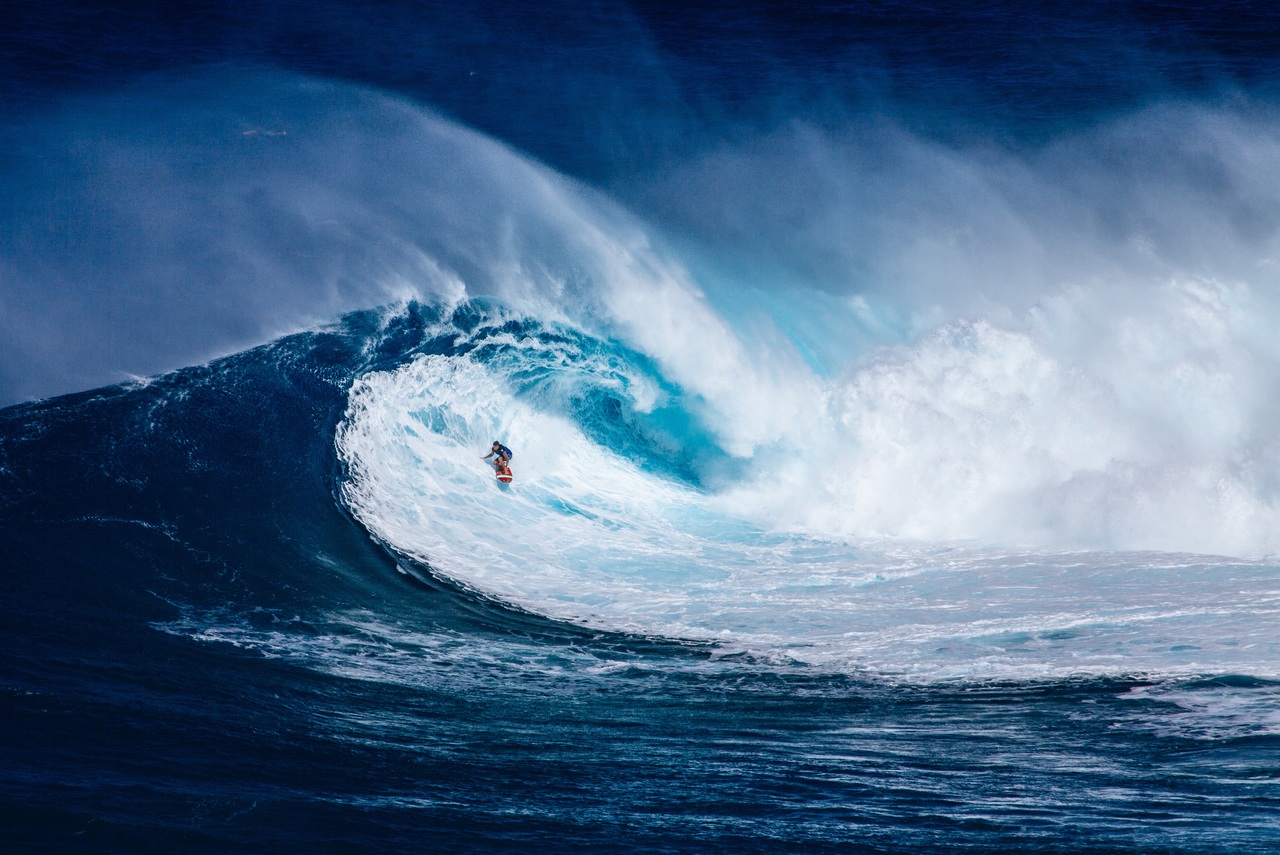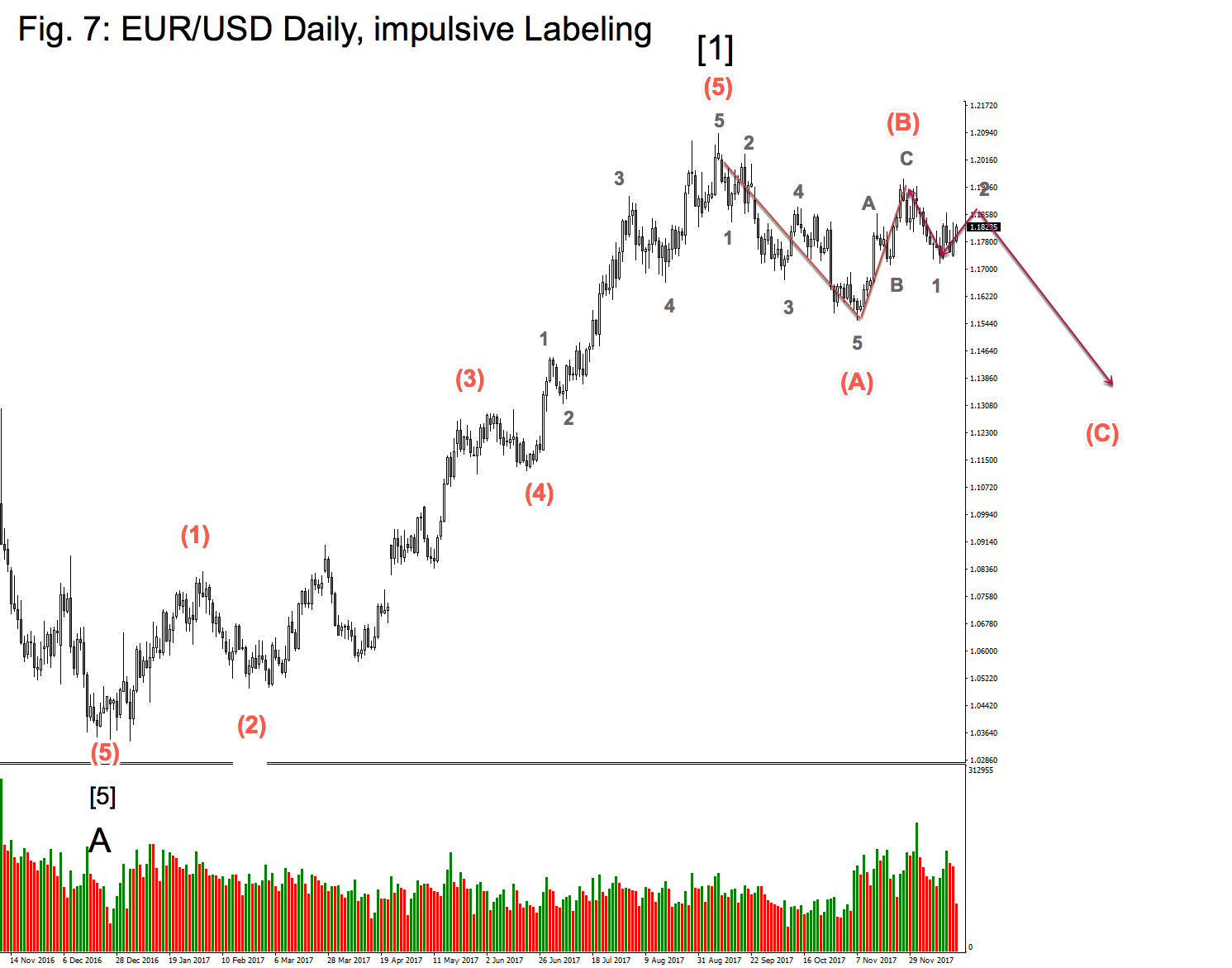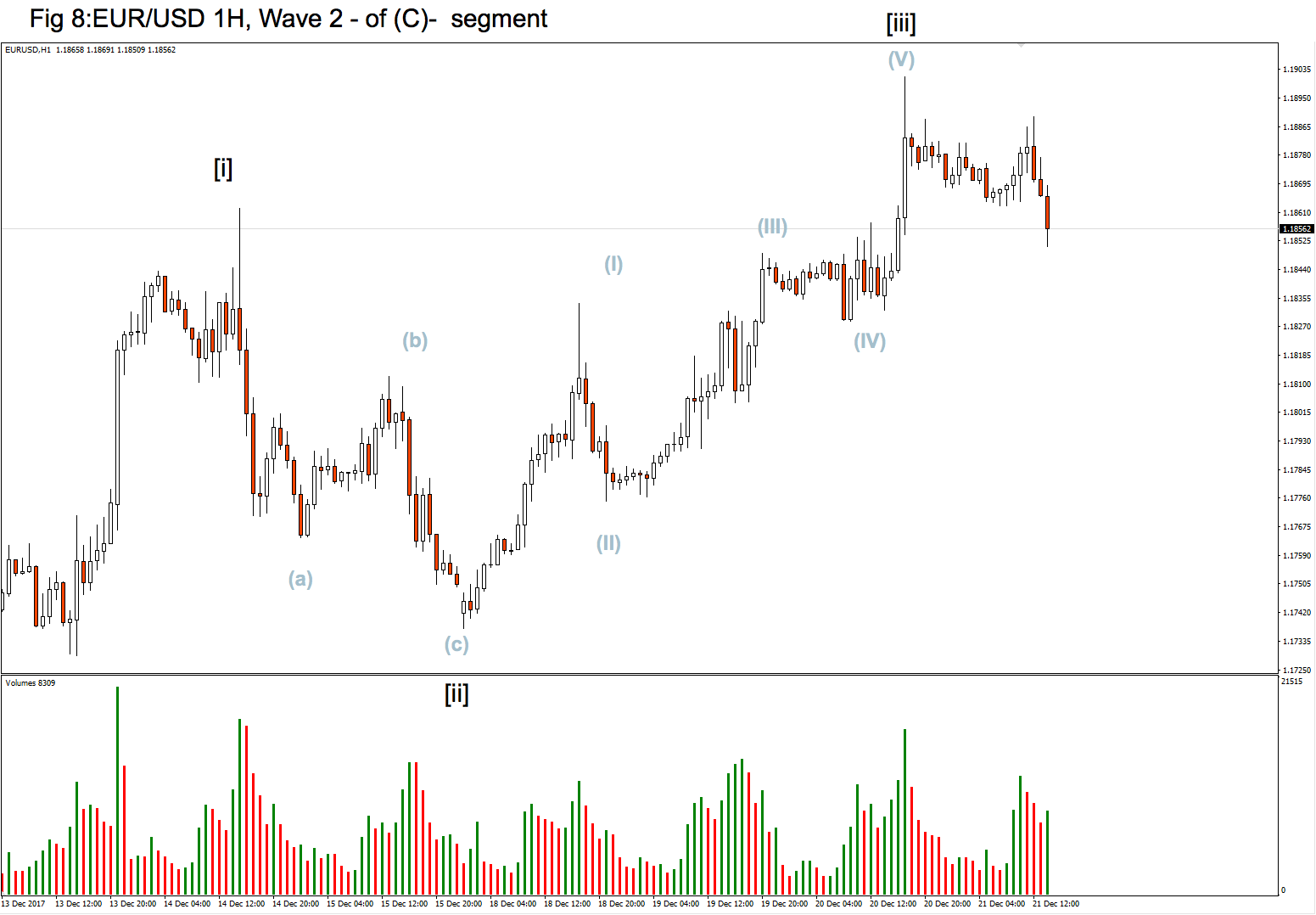On The Elliott Wave: Guide to Wave counting-II we will focus on the latest segment of the daily chart and, then we go intraday to dissect the last part of the price action.
Getting closer: the latest segment on a daily chart
Now, let’s go and label the last leg, starting from the end of A, [5],(5) on a daily timeframe. We observe that the main part of the price action is within an impulsive wave of intermediate degree, which ends at about 1.21 and then a corrective phase begins. It is, also the first wave of the primary trend.
Let’s see two possible ways to label it in fig 6.
We observe that both counts are similar, except in waves (3) and (4). But we notice that the rule that wave 3 is never the shortest is violated, therefore, the green it’s not valid.
Finally, we are reaching the final, unlabelled segment. So let’s label sub-waves in wave (5) and flag the corrective segment as well:
As we observe, the EUR/USD is currently in a (C) wave and within that (C) wave is moving on a wave 2 that is close to its end.
Going intraday
We, finally are reaching the final stages. We know that prices are travelling within wave 2 of Wave (C), and now we would like to spot where are we within that wave 2: Fig 8 shows the EUR/USD hourly chart with the labels applied using the same method: spotting highs and lows. That shows the locations of waves [i], [ii] and [iii], and by labelling the lower grade highs and lows we can label, also, the constituent sub-waves.
That shows the EUR/USD has ended Wave [iii] and is currently moving through wave [iv] which, in turn, will give place to the fifth wave, and end the wave 2 of higher degree, shown in Fig. 7.
From now on, we know that we are bullish and should wait for the end of the current wave [iv] to go long. To get close to where we should expect wave [iv] finishes, we can apply Fibonacci retracement levels, or draw price channels, but in the end, let the market tell us that, using breakouts of the current corrective wave, always applying our reward-to-risk ratio measurements to filter out nonproductive trades.
Conclusions and takeaways:
- A good approach to correctly label a chart using the Elliott Wave theory is to start with the longest timeframe.
- To do that we identify major tops and bottoms and try to apply the respective labels using the rules of the theory
- Then we continue with the last segment of that timeframe and try to label it.
- In the case where we reach a partial segment, we move to a shorter timeframe, weekly or daily to put a magnifying glass on that segment.
- Now we could continue magnifying and go to daily and intraday to label minor trends and legs, up to the point we spot where the price action currently is.
- To find an entry point, We could apply Fibonacci retracements or draw price channels.
- We should pull the trigger when we see a confirmation that the main trend resumes.
- We should use proper reward to risk analysis and position sizing to maximixe the chance of being profitable on the long run.
Take your trading to the next level with our 14 Day, No Obligation, Free Trial. You will soon discover why we are trading’s best-kept secret. We are successfully building the world’s largest group of profitable traders and would like you to be part of it.
You can join for as little as $19.99 per month, no contract, cancel anytime. Just one profitable trade each month covers this amount, the rest is pure profit. You will benefit from unparalleled access to our professional traders, our transparent trading performance, our LiveTradeRooms and access to the most comprehensive trading education on the market. What have you got to lose? JUST CLICK HERE TO GET STARTED NOW and see how real money is made!
Featured image courtesy of https://pxhere.com





